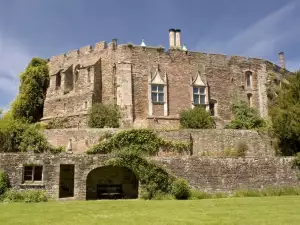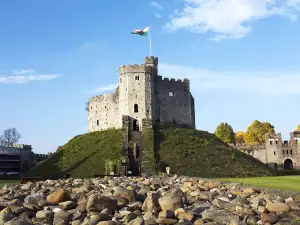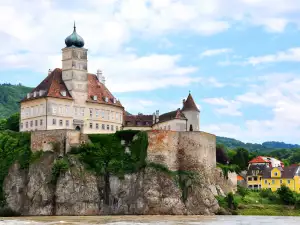Bristol
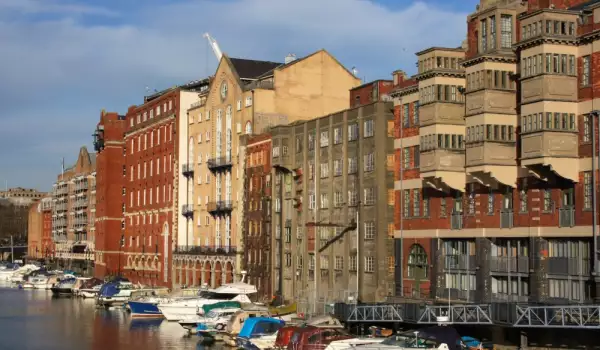
Bristol is an English city and an area in the southwestern part of the country. The city has a population of about 433, 000 people. Bristol is the largest cultural and educational center in the region. There are thirty-four cities and towns, called Bristol. They are located in different corners of the world - U.S., Canada, Barbados, Jamaica and others.
Sixty thousand years ago, on the territory of present-day Bristol there were people - from the Paleolithic age. In Roman times this place was a village which was called Abona. An old English city Brycgstow, which translates as the place where there is a bridge, is established in 1020. In 1067 the city has a well-built defensive fortifications that failed to contain the attack of the Irish. Under the Normans’ management of the city becomes one of the strongest castles in southern England.
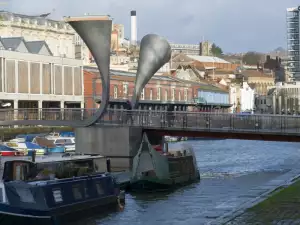
In the eleventh century the city became an important port. A large part of goods to Ireland pass through here. In 1247 was erected a new stone bridge, which in the middle of the eighteenth century was replaced by another bridge, which stands to this day. After the mid-fourteenth century the city became a center of shipbuilding. At that time, over one third of the population of the city was destroyed by an epidemic of plague.
In the fifteenth century Bristol was a very important port for trade with Iceland and Ireland. Expeditions set off from Bristol for the Study of North America. In the sixteenth century Bristol became a city that focuses on the development of trade with Spain and the American colonies.
The city flourished again in the seventeenth century, with the increasing American colonies of England. The city became a center for the sale of African slaves. It got to the point that Africans were exchanged for manufactured goods and slaves transported to America in miserable conditions. During the heyday of the slave trade - from the beginning of the eighteenth to early nineteenth century, here were equipped over two thousand slave ships. They transported over half a million people from Africa to America.
In the nineteenth century, starts a movement of the anti-congestion of vessels. At this time in Bristol happens a population boom, which increased the city’s inhabitants fivefold in the nineteenth century.
During World War II, it became the subject of bombing. The former central commercial area of town that was destroyed by bombing, is now a park, which has kept two bombed churches. Another church, which was also bombed, is the church of St Nicholas, which has been restored and turned into a museum.

In the early twentieth century in Bristol city were living over three hundred thousand people. The education system in the city received a major boost in 1909 with the establishment of the University of Bristol. In 1969 the building of the Polytechnic university was opened, which later became the University of West of England.
WWII had disastrous effects for the city. Over a hundred thousand buildings were damaged and over three thousand of them were razed to the ground. The recovery period in central Bristol is characterized by the construction of cheap large blocks in the sixties of the twentieth century.
In Bristol, the Rugby Union was founded back in 1888. Competitions in this sport are held at the highest level here. Rugby shared space for training and competition with the Bristol Rovers Football Club from 1996. Although the initial purpose was for a rugby club, the positions are reversed and the football club headed the tally. Bristol has another football club - Bristol City.
Bristol city attracts many tourists with its beautiful buildings and great atmosphere.
Among the landmarks of the city of Bristol is a ferry that runs from 1977 onwards. One of the attractions is the ferry sail with Santa Clause, which attracts many children on the ferry.
The Chapel of John Wesley was named after the famous preacher, who was invited to preach in the city in 1739. His talent to enchant the crowd left no inactive residents of Bristol. The chapel is the house where the preacher stayed.
The Museum of British imperial and contemporary art has gathered very valuable exhibits that represent incredible value not only for their beautiful performance, but also because of the famous artists who created them.
Horseworld is the name of the place where the tired old horses live the rest of their days in the most pleasant and relaxed atmosphere. In Bristol there is a zoo, where they have collected many interesting species of animals.
